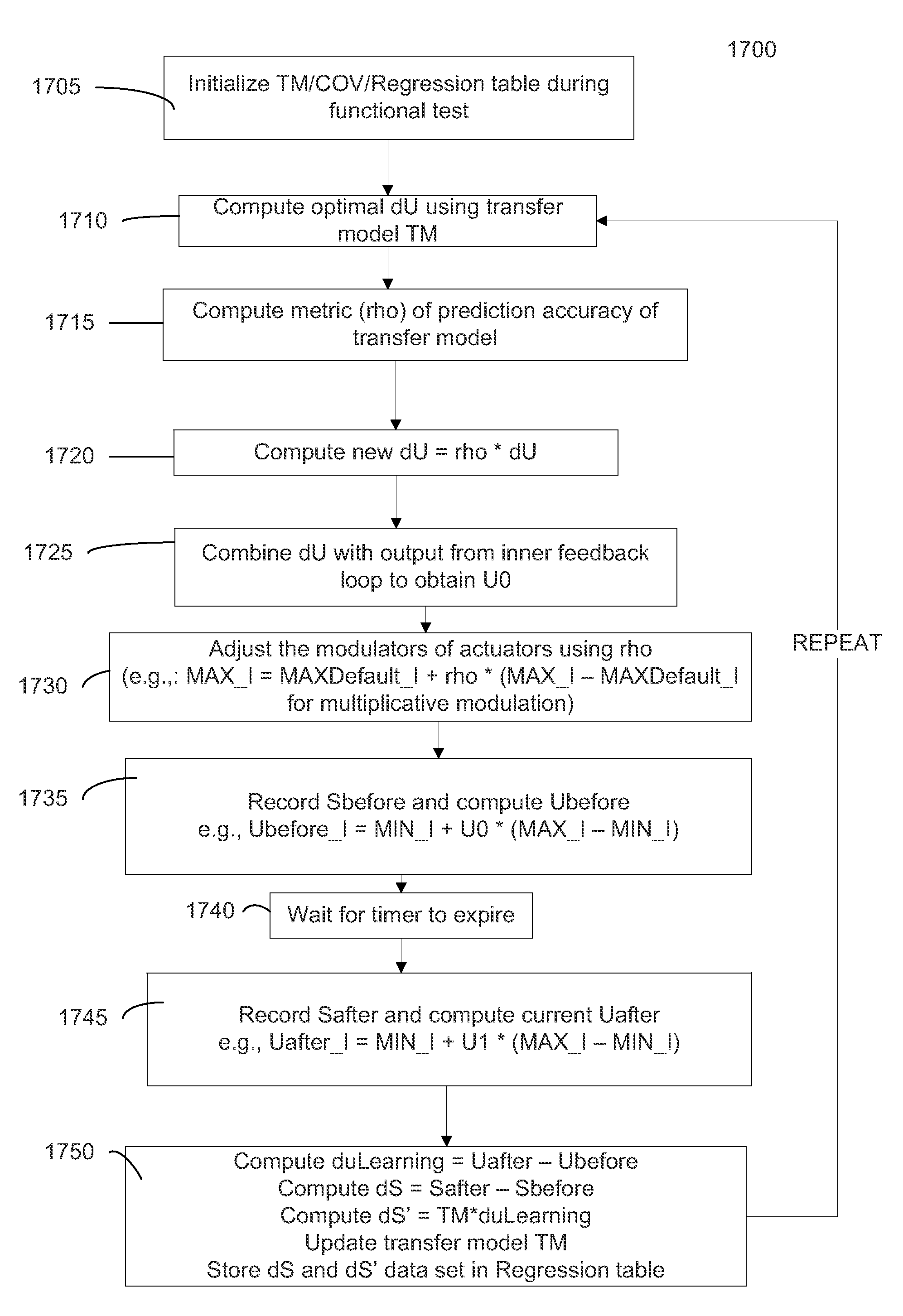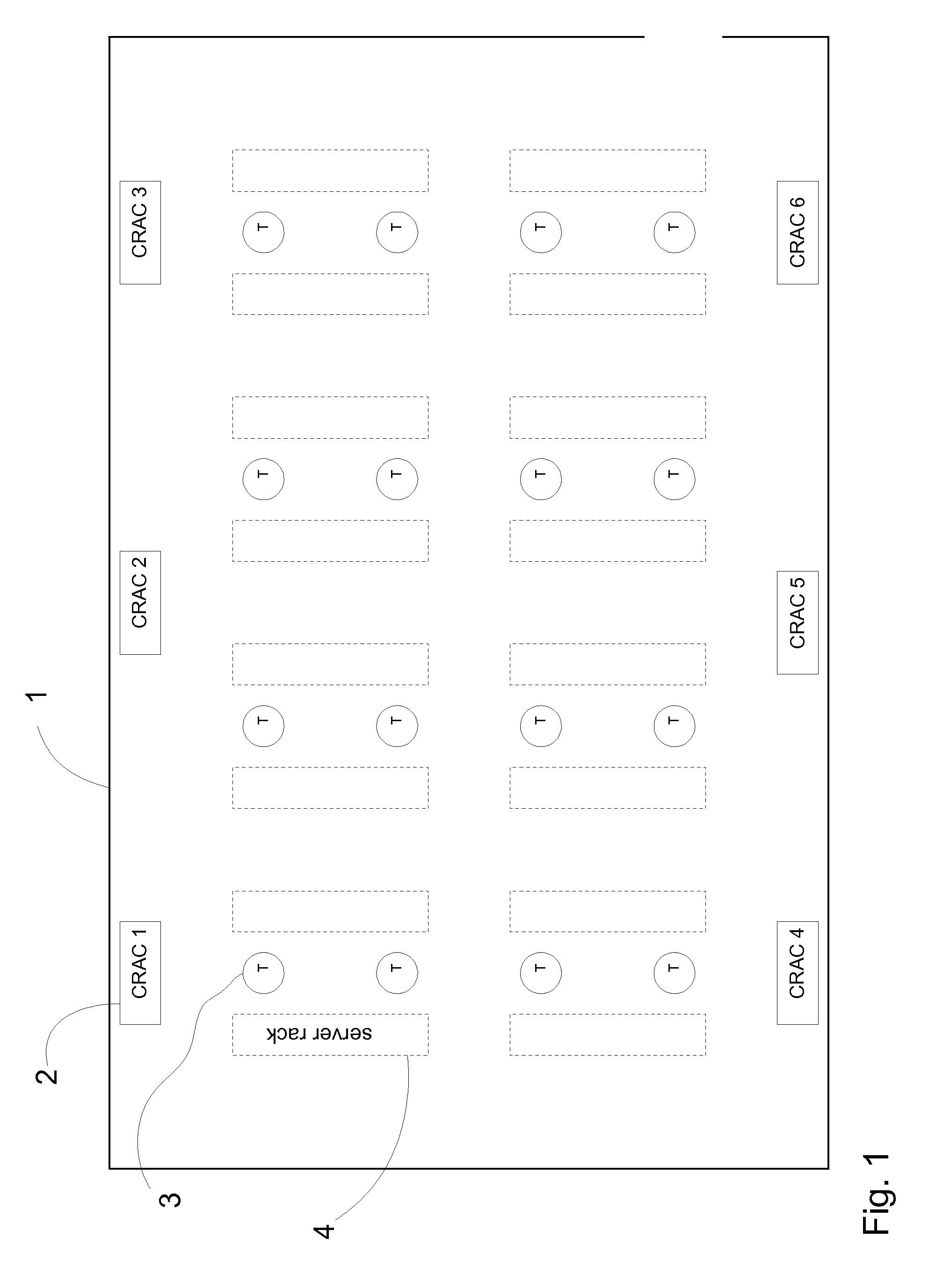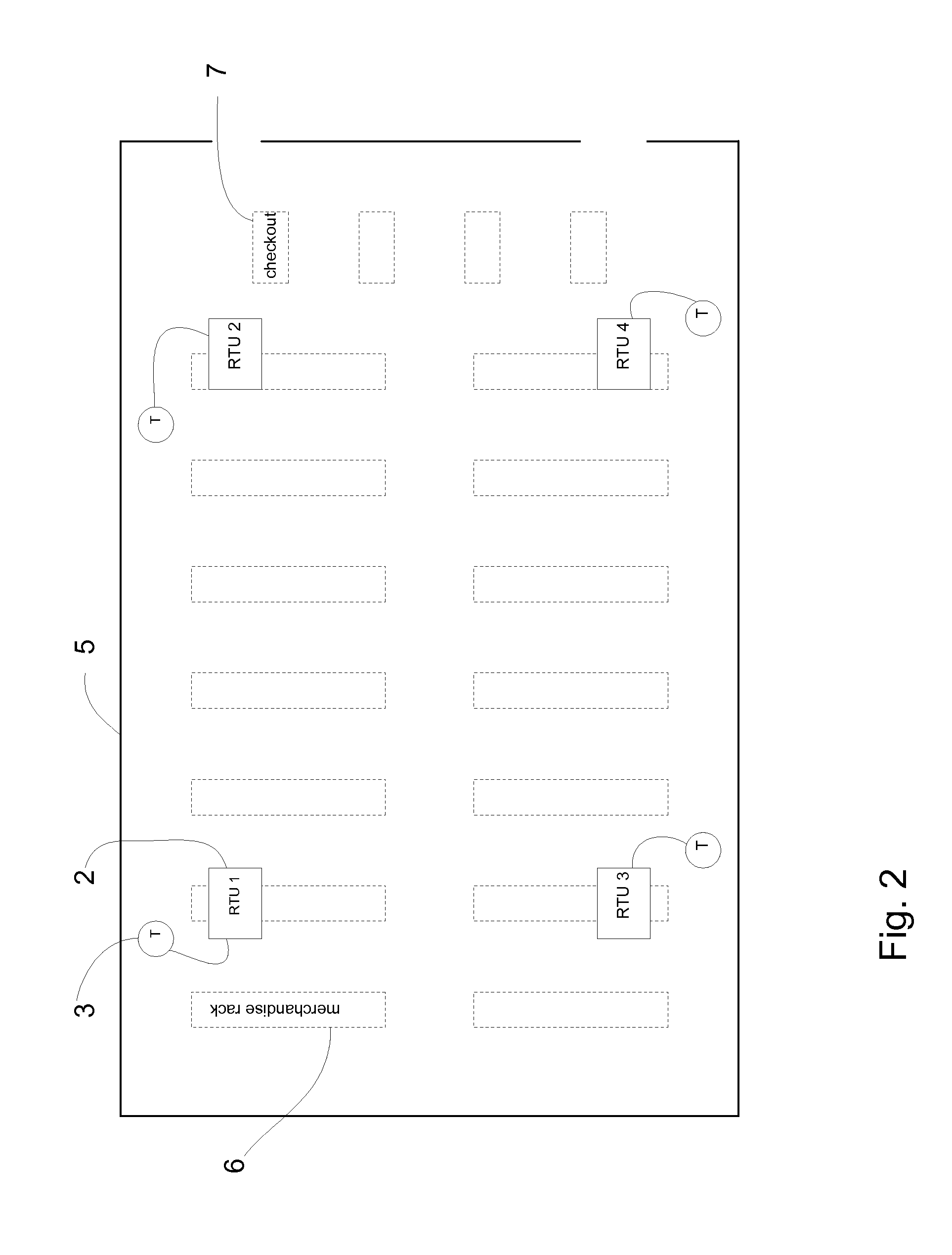Energy-Optimal Control Decisions for Systems
- Summary
- Abstract
- Description
- Claims
- Application Information
AI Technical Summary
Benefits of technology
Problems solved by technology
Method used
Image
Examples
Embodiment Construction
[0040]To ensure that an environment (e.g. a data center) is sufficiently cool or warm, standard operating procedure is to operate extra HVAC units (or other environmental maintenance modules) beyond what is marginally required. However, such precautionary measures waste energy. Various embodiments can analyze sensors throughout the environment (e.g., sensors across modules or at locations outside of modules) to determine whether the operation levels of specific modules can be safely reduced and whether increased operation is required (e.g. due to an out-of-range measurement), including which module is optimal for bringing the sensor back in range. Such embodiments can provide stable environments while reducing energy consumption. A transfer model (e.g., a matrix or set of matrices) can be used in performing the above determinations. In one aspect, the transfer model can provide a relation between a change in operation level of a module and resulting temperature differences for each ...
PUM
 Login to View More
Login to View More Abstract
Description
Claims
Application Information
 Login to View More
Login to View More - R&D
- Intellectual Property
- Life Sciences
- Materials
- Tech Scout
- Unparalleled Data Quality
- Higher Quality Content
- 60% Fewer Hallucinations
Browse by: Latest US Patents, China's latest patents, Technical Efficacy Thesaurus, Application Domain, Technology Topic, Popular Technical Reports.
© 2025 PatSnap. All rights reserved.Legal|Privacy policy|Modern Slavery Act Transparency Statement|Sitemap|About US| Contact US: help@patsnap.com



